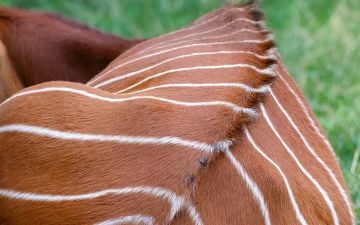Buffalo, African Forest
Scientific Name: Syncerus caffer
Subspecies: African Forest buffalo (Syncerus c. nanus), Savannah buffalo (Syncerus c. brachyceros ), Nile buffalo (Syncerus c. aequinoctialis). Caffer buffalo (Syncerus c. caffer)
Distribution: The Nile buffalo has the most northern distribution of the four sub-species, ranging from Senegal in the west, across a broad belt over the continent of Africa to Sudan in the east. The African Forest Buffalo is found in the west African rainforest from Gambia to the Congo and North Angola. The Savannah buffalo is found in West Africa while the Caffer Buffalo has a distribution range that stretches in a broad belt along Africa’s east coast from Ethiopia and Somalia in the north to South Africa in the south.
Habitat: The buffalo’s habitat is very much dependant on which sub-species it belongs to. Buffalo can be found in everything from dense rainforest, marshes and dense bush to open grasslands.
Description: Syncerus c. caffer is the largest of the four buffalo subspecies with a shoulder height of up to 150 cm and a body weight of around 900 kg. It is grey/black in colour and the coat of adult animals is almost hairless. Syncerus c. nanus is the smallest of the four buffalos with a shoulder height of 100cm and a body weight of between 250 - 300 kg. It is chestnut brown in colour (red-brown). The African Forest Buffalo is regarded as being the most agressive of the four subspecies. Cyncerus c. aequinoctialis is similar to the caffer buffalo in appearance, but is size it is midway between the first two subspecies described above. The Savannah buffalo (Cyncerus c. brachyceros ) is also midway between the first two subspecies in size, but both red-brown and bleakk colour variants can be found.
Hunting method: Stalking with trackers. Fresh tracks are looked for in the early morning, which we later be followed up by the trackers.
We offer this specie on the following tours















